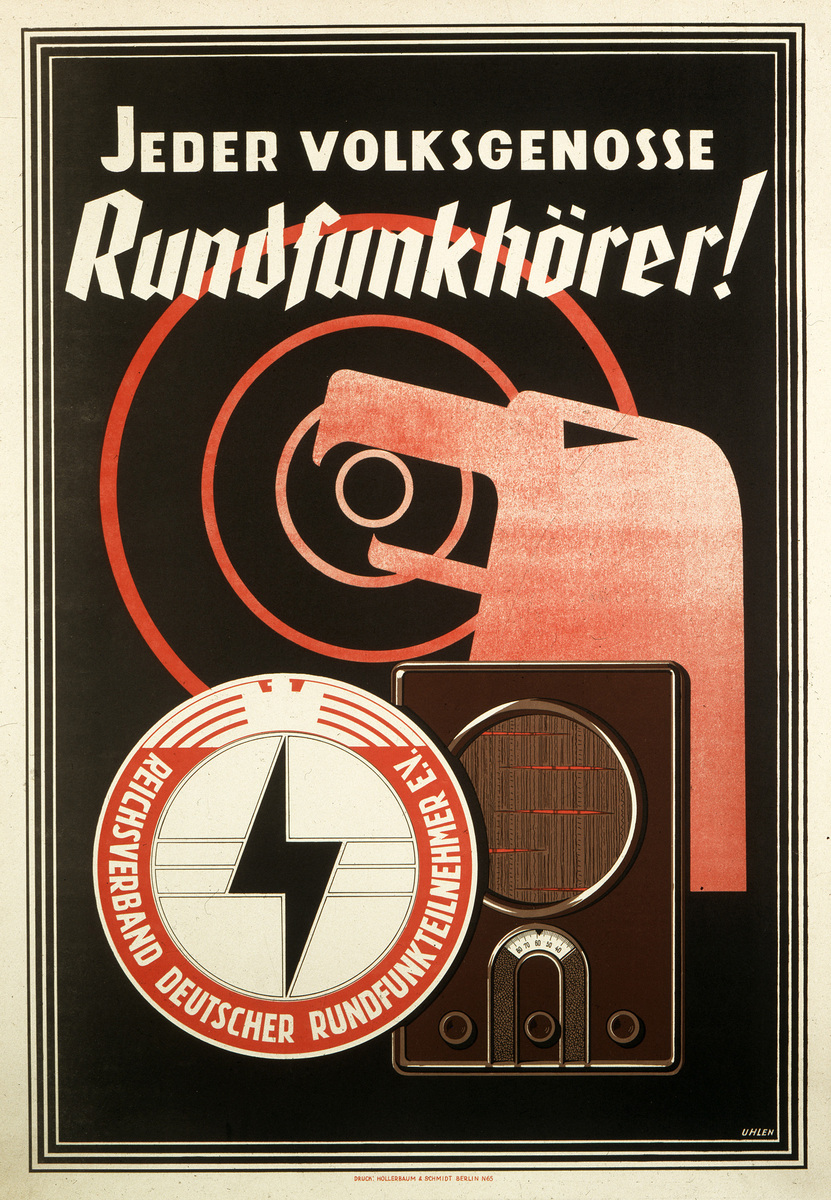Abstract
The Nazis prided themselves on being a political force which utilized
modern technology to reach citizens in new ways. Radios served an
important role in this aim, and the regime launched a campaign to
provide affordable radios to every German household in 1933. The
“Volksempfänger” or “People’s Radio” was designed to be simple and
affordable, and placing one in every household was an important part of
the Propaganda Ministry’s plans. Joseph Goebbels recognized the
political power of this medium, but he also learned to limit the time
given to political messaging because of popular demand for light
entertainment, such as radio dramas, or the
Wunschkonzert (Request Concert for
the Military) during the war years. The “People’s Radio” had a simple
design to keep its prices low, but this simplicity also provided a
second benefit—at least for the regime—in that it had a very limited
range, making it less likely that Germans could tune in to foreign radio
signals unless they lived closer to the border. This advertisement from
around 1936 depicts the “People’s Radio” and the regime’s promise of
making radios available “for every member of the nation”—a phrase that
also served to distinguish between those people who did not belong to
the “racial community.” Jews, for instance, were banned from owning
radios after January 1, 1939.
The poster was published by the “Reichsverband deutscher
Rundfunkteilnehmer e.V.,” a nationalist interest group founded by German
nationalists in 1930 and headed by Goebbels from 1932. Under his
direction, an “art department” was set up to train journalists and radio
announcers loyal to the party line. By 1936 radio was entirely
controlled by the regime, so the organization had become redundant and
was dissolved.
